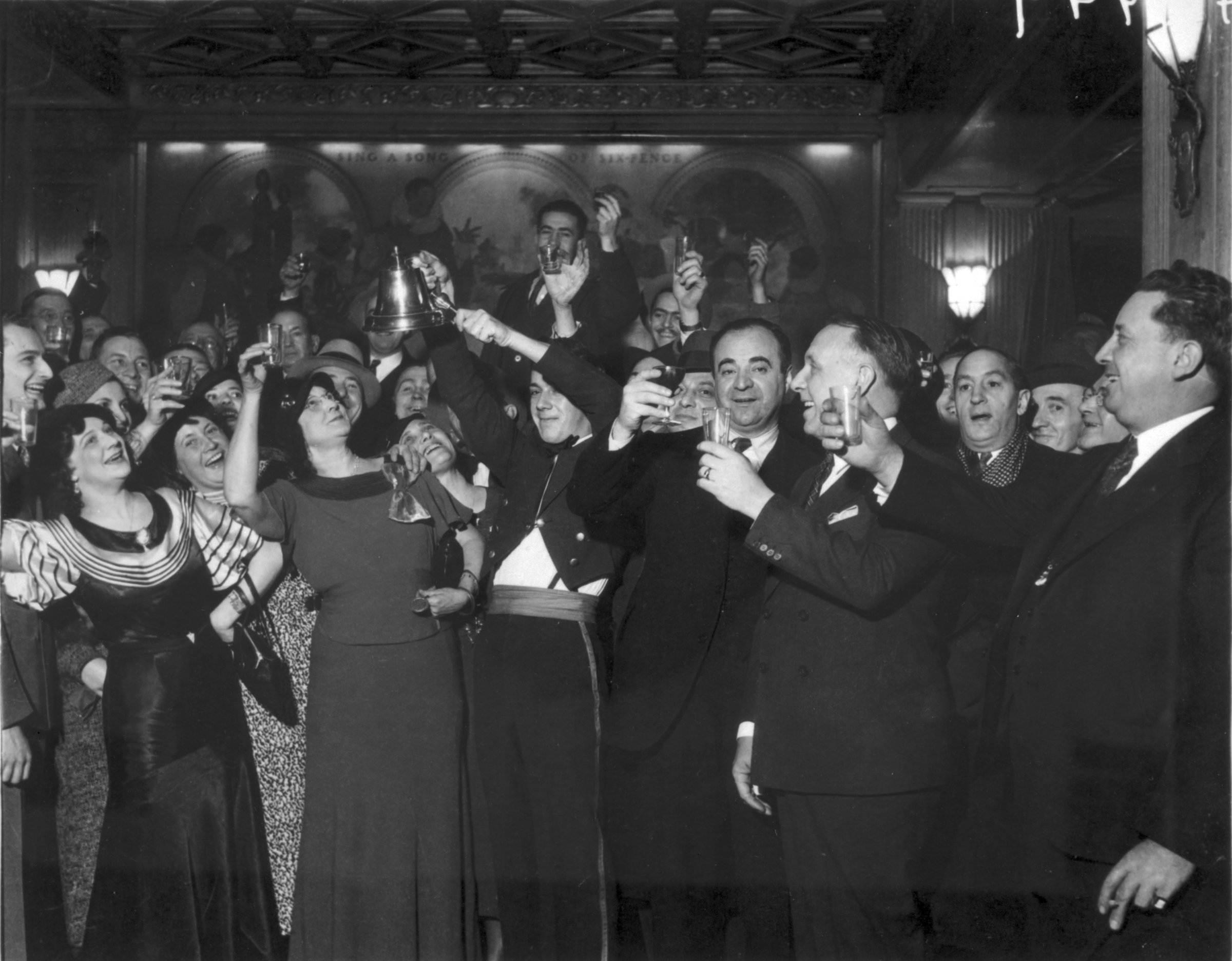
It’s widely understood today that drinking while pregnant is harmful for the fetus. But the link between alcohol and the health of infants wasn’t as well known in the 1930s, when prohibition was repealed in the U.S. and all sorts of people, pregnant women included, began drinking again.
Because prohibition was lifted on a piecemeal basis across the U.S., some counties continued to prohibit alcohol, or stay “dry,” while their neighboring counties were “wet.” Those conditions created what economists call a natural experiment, and made it possible to track the health impacts of maternal drinking decades later. According to a new study that compares the causes of death for babies born in wet and dry counties between 1935 and 1941, maternal drinking was linked to a 3.3% greater chance of death between 1990 and 2004.
The paper, from economists at universities in Singapore, Canada, and Denmark, harnesses U.S. Census data and death records collected by the U.S. Centers for Disease Control and Prevention. When the population is sorted by whether they were born in wet or dry counties, there is no difference in death rates for causes like car crashes. But, the authors write, “we find that in utero exposure to alcohol availability is associated with increases in mortality rates for heart disease and stroke in later life.”
The study was published in July as a working paper from the National Bureau of Economic Research, which means it hasn’t yet been peer reviewed. It builds on research from the same authors that found a 4% increase in infant mortality in wet counties in the years following the repeal of prohibition. While the U.S. Surgeon General began issuing warnings about the risks of drinking while pregnant in 1981, nearly 10% of women globally still drink while pregnant, and about 119,000 babies annually are born with fetal alcohol syndrome (FAS). FAS manifests in a wide range of symptoms, from low birth weight and abnormal facial features to hyperactivity and intellectual disabilities.
But the study authors also think the study can be instructive as the U.S. embarks on another massive repeal of prohibition: that of marijuana. As states and cities legalize cannabis, they are enacting changes in public policy with impacts that may not be seen for decades, says David Jacks, a study author and economist at the National University of Singapore and Yale-NUS College.
“Fundamentally, you don’t have any good clinical evidence of long-term outcomes of cannabis consumption,” he says. “We need to acknowledge there are going to be some trade offs here.”
Read More: Why the Repeal of Prohibition Actually Made it Harder to Get a Drink
Prohibition lasted from the ratification of the 18th amendment to the Constitution in 1920 to its gradual repeal, starting with the sale of low alcohol “near beer” early in 1933 and the passage of the 20th amendment later that year. The temperance movement had enormous popular support, however, and as the authors note, not all regions rushed back to drinking. Per-capita alcohol consumption in the U.S. didn’t return to pre-prohibition levels until the 1970s.
Jacks says his research into the consequences of prohibitions repeal began years ago when reading a popular history on the period by author Daniel Okrent. Because the repeal didn’t happen uniformly across the country, it created “thousands of policy experiments,” he says.
A lot of other things were happening in the U.S. then as well, such as the Great Depression and the Roosevelt Administration's New Deal. As a result, the researchers had to correct for policy changes in the New Deal that might have extended the lives of children born in the 1930s. They also looked at whether adult death rates from children born in wet and dry counties might have been affected by gender or race, but found no statistically significant difference. “These results suggest that our baseline results are not driven by other mechanisms such as differential health care access along the lines of sex or race,” they write.
While the repeal of prohibition was generally bad for the nation’s health, it did improve it one way, Jacks notes. Rates of alcohol poisoning fell as legal and regulated liquor replaced moonshine and “paint thinner masked with coloring,” he says.
More Must-Reads from TIME
- Why Trump’s Message Worked on Latino Men
- What Trump’s Win Could Mean for Housing
- The 100 Must-Read Books of 2024
- Sleep Doctors Share the 1 Tip That’s Changed Their Lives
- Column: Let’s Bring Back Romance
- What It’s Like to Have Long COVID As a Kid
- FX’s Say Nothing Is the Must-Watch Political Thriller of 2024
- Merle Bombardieri Is Helping People Make the Baby Decision
Contact us at letters@time.com